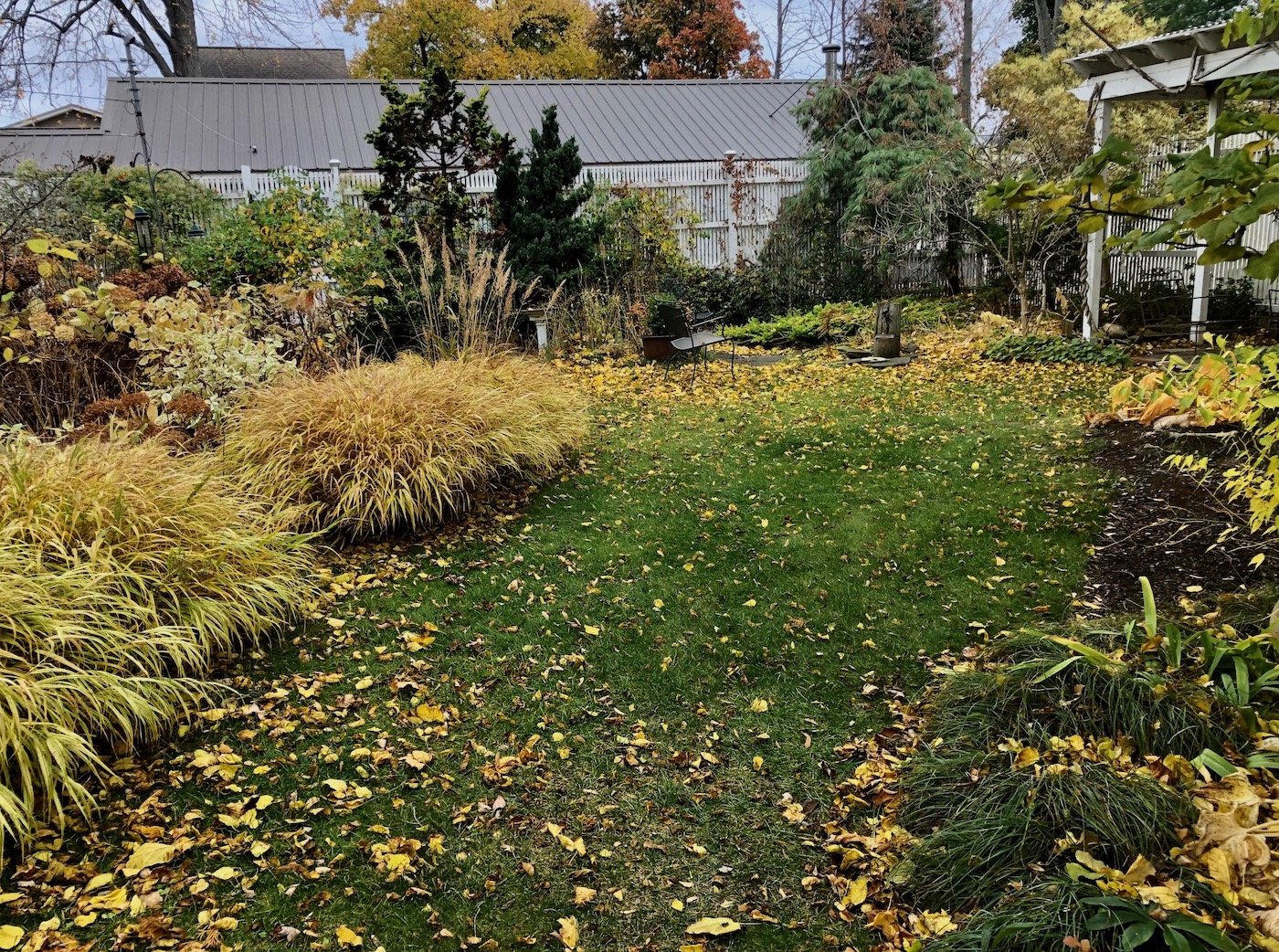Letting Nature Take Its Course: 6 Tips for Sustainable Leaf Management
Years ago I had a consultation with a woman who was obsessed with keeping the neighbors leaves out of her yard - nothing she tried (even complaining to them) had worked. Seriously - we discussed it at length for an entire hour. I encouraged her to view the leaves as a resource and to recycle them into her garden, but in the end, she wasn't sold on the idea of allowing nature to take its course. I suppose breaking old habits or embracing new approaches can be tough.
To be sure, the practical aspect of what to do with the daily onslaught of leaves can feel daunting to anyone. Cleaner uppers want to banish them to the landfill, die hard environmentalists are passionate about recycling them. I fall somewhere in between these two camps. I think there’s a way to strike a balance. Neat and tidy need not prevail over gardening sustainably. It’s all about management and planning. My own approach is primarily driven by a combination of practicality and laziness. Interested in giving it a shot? Read on.
1. Leaves on the lawn: This is the primary complaint from the cleaner uppers, although I think most of us want some degree of tidiness around our homes. I don’t think there is any question that leaves are beneficial to the lawn and garden, they fertilize and enhance the soil structure, provide habitat for beneficial insects and wildlife.
But I think there’s a balance. Big piles like this will eventually smother the grass and kill it.
I recently rescued this patch of lawn from a hefty pile of leaves that had been sitting on it for three weeks. This area will green up again now that it isn’t smothered. All winter? I don’t think so.
So what else can you do to maintain sustainability and have a somewhat pristine lawn? If you don’t have enormous leaf piles sitting around, use the lawnmower.
Mowing over leaves shreds them into mulch that fertilizes the lawn. Another option is to attach the bag to the mower and use the mulch you collect in the garden. It’s a bit more time consuming but the results are worth it. Shredded leaves are a tidy, attractive mulch I always wish I had more of. You can avoid big accumulations by mowing at regular intervals as the leaves come down. If you’re careful (lift the mower up from the back a little and mow narrow paths), you can run through some pretty big piles without clogging it up. If you have more leaves than you can mow over, you’ll have to resort to raking.
2.Raking and Hauling: Taking leaves out to the road for pick up is just as much work as dragging them to a garden bed and recycling them. Why get rid of gardeners gold? Still, dragging leaves around on a tarp isn’t my idea of a good time. If you have to rake piles, put them in an easily accessible area. I haul mine to the nearest bed with shrubs or trees in it and rake them to the back. They break down quickly, add tilth to the soil and act as mulch to keep weeds down. It’s an easy way to tidy up - no leaves litter the lawn and the piles are hidden from sight.
It’s worth talking about what kinds of leaves fall on your property because some decompose more quickly than others. Leaves from oaks, beech and magnolias break down slowly, tuck them behind shrubs or in another less visual spot. Beech, maple, ash and dogwood leaves break down more quickly - a better choice for vegetable gardens or perennial beds.
3.Stash them away: Sometimes you have more leaves than you know what to do with - or have too many that decompose slowly. Why not find a place to keep them for future use? They come in handy for mulching and composting later. In the photo below, I used a defunct vegetable bed to hold my extras. It helps that there’s already a fence to contain them, but any other out of the way area would do. I have a friend who piles his up behind an enormous shrub border behind his house.
I like this method so much, I may keep composting and start growing vegetables in it again.
4.Let the leaves feed you: Literally - like in the vegetable garden below. I piled them on the beds and paths between. The leaves add nutrients, improves soil quality and keeps weeds down. Note that I avoided open paths that will allow the wind to blow them about.
5.Address tough spots now: Avoid the disgusting chore of pulling globs of wet leaves off plants and out of corners in the spring. Get them out of awkward places now while they’re still dry.
6.Give up on losing battles: Much like the woman I counseled about her leaf problem - I had a futile war going on with the long quince hedge on the corner of our lot. It’s sharp little stickers caught every leaf in the neighborhood. First, I tried raking and sucking them out with a leaf vacuum. It looked great for about a week until they all collected again. The following year I put up a burlap fence, hoping to put a barrier between the hedge and barrage of leaves. That was a failed and somewhat expensive effort. In frustration I gave up and let them accumulate. To my surprise, the hedge not only survived my neglect but thrived, revealing a resilience I hadn't bargained on. It was a reminder for me to take a page from my own book, letting nature take its course is the best approach to management. What losing battles are you fighting? I’d love to hear about them!











